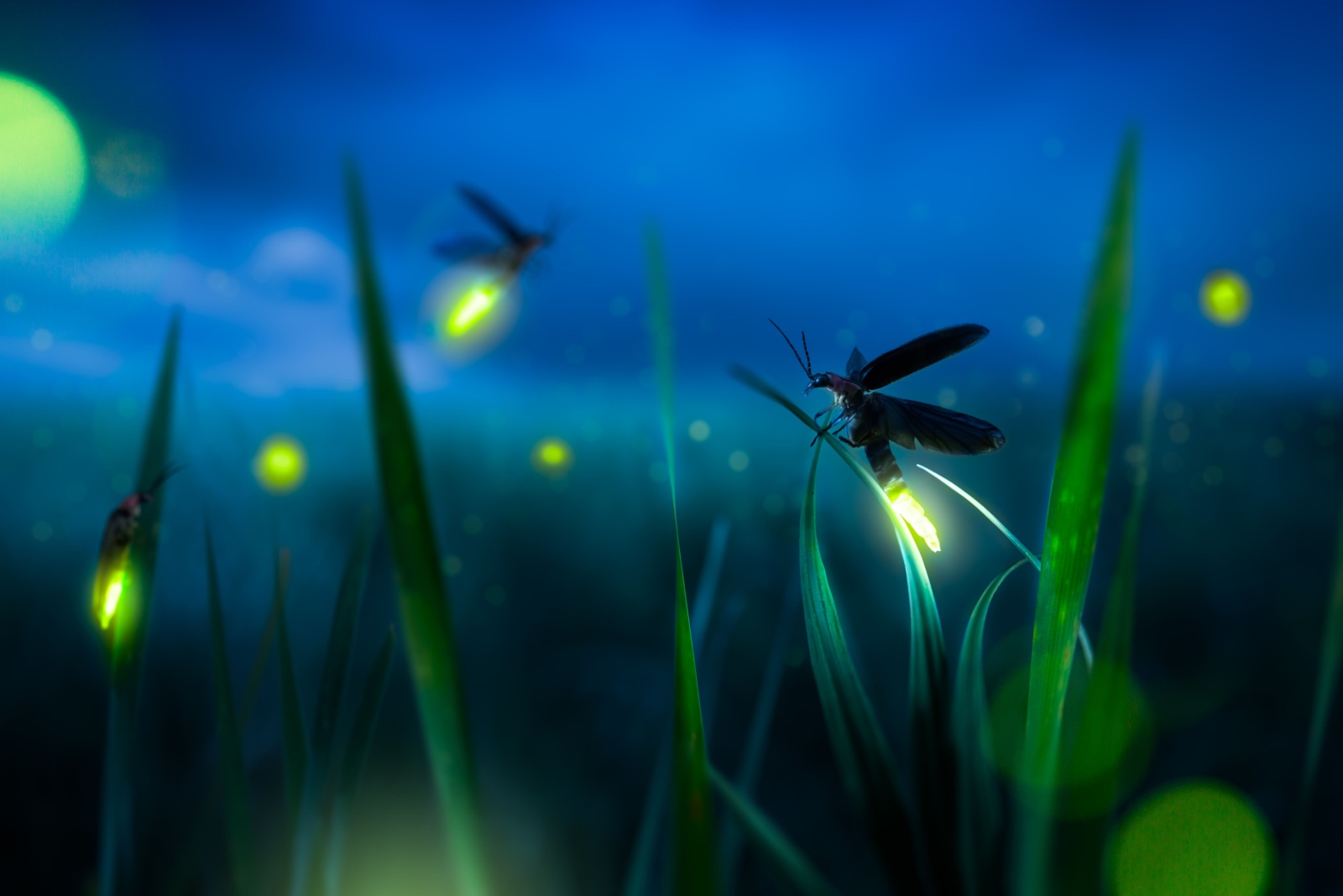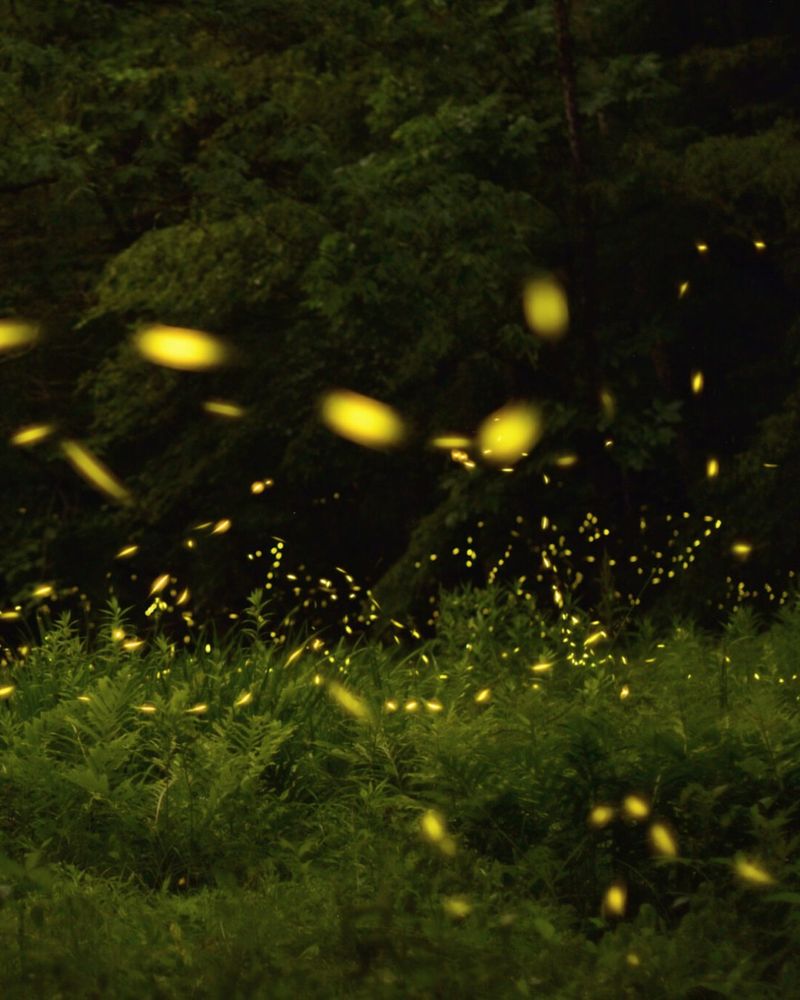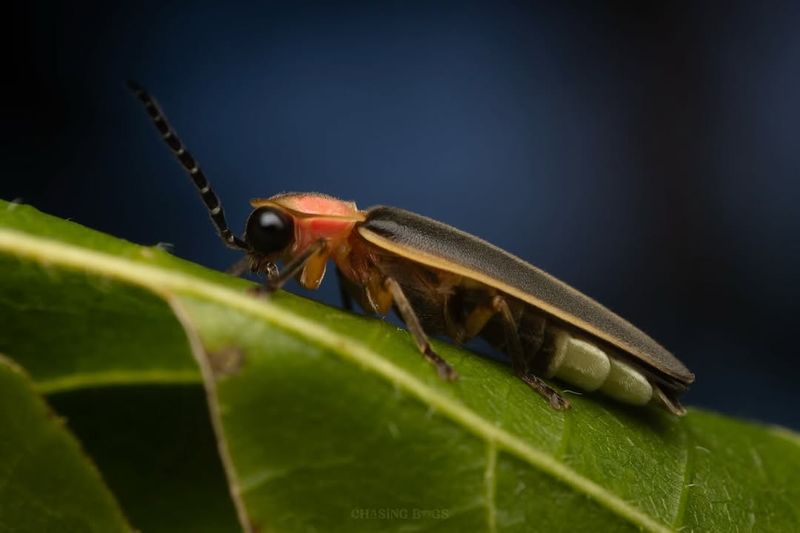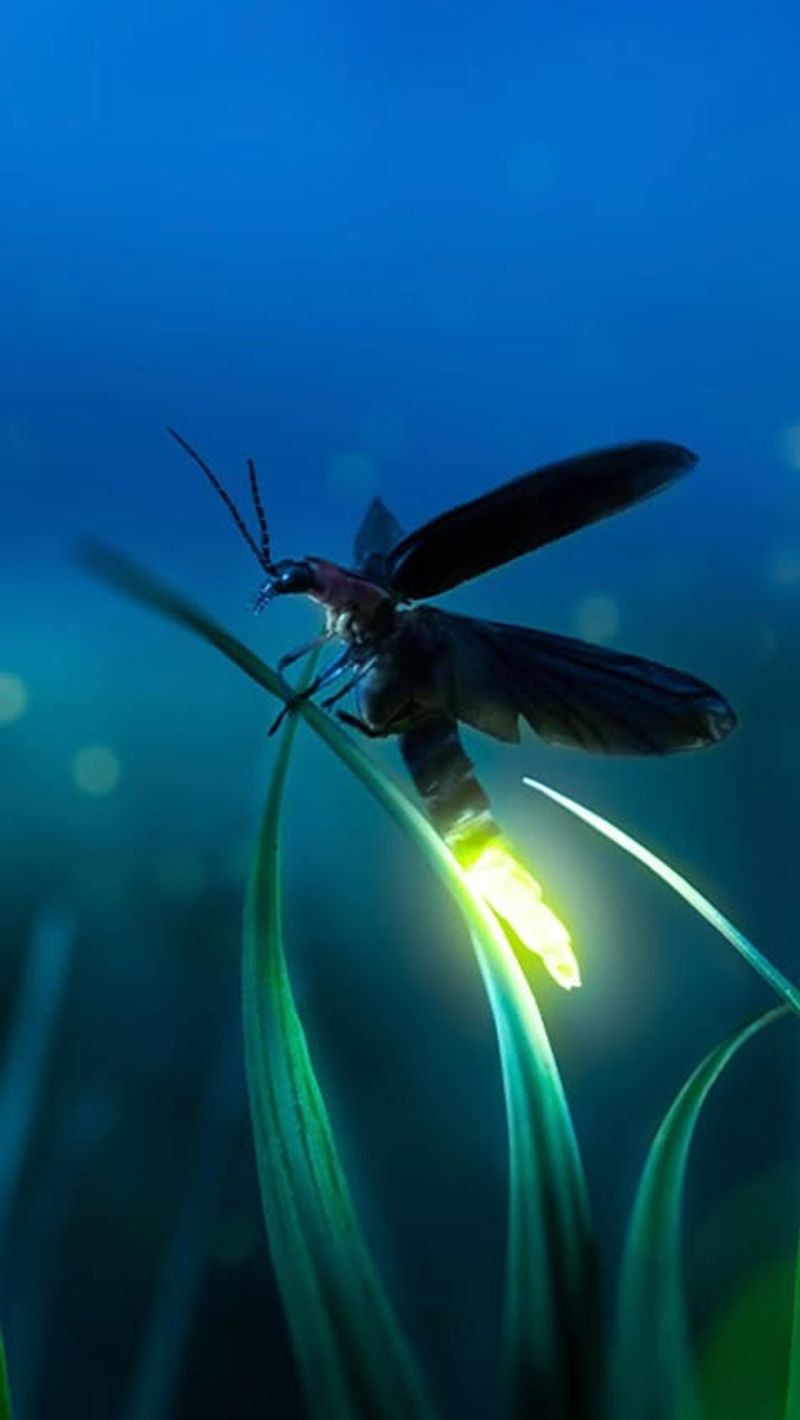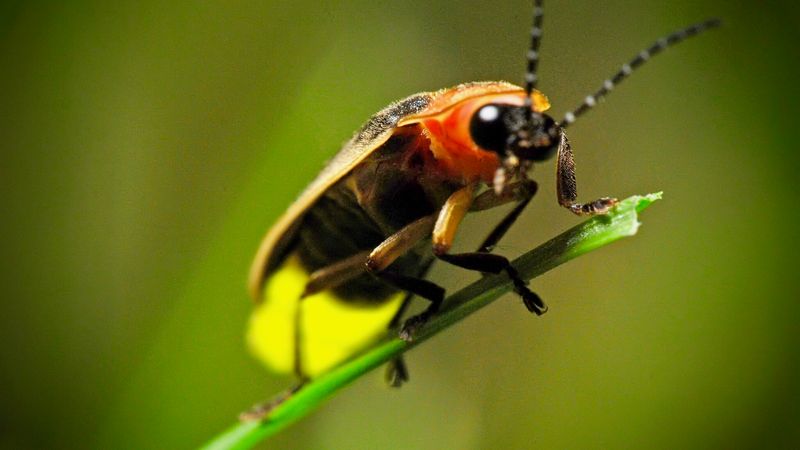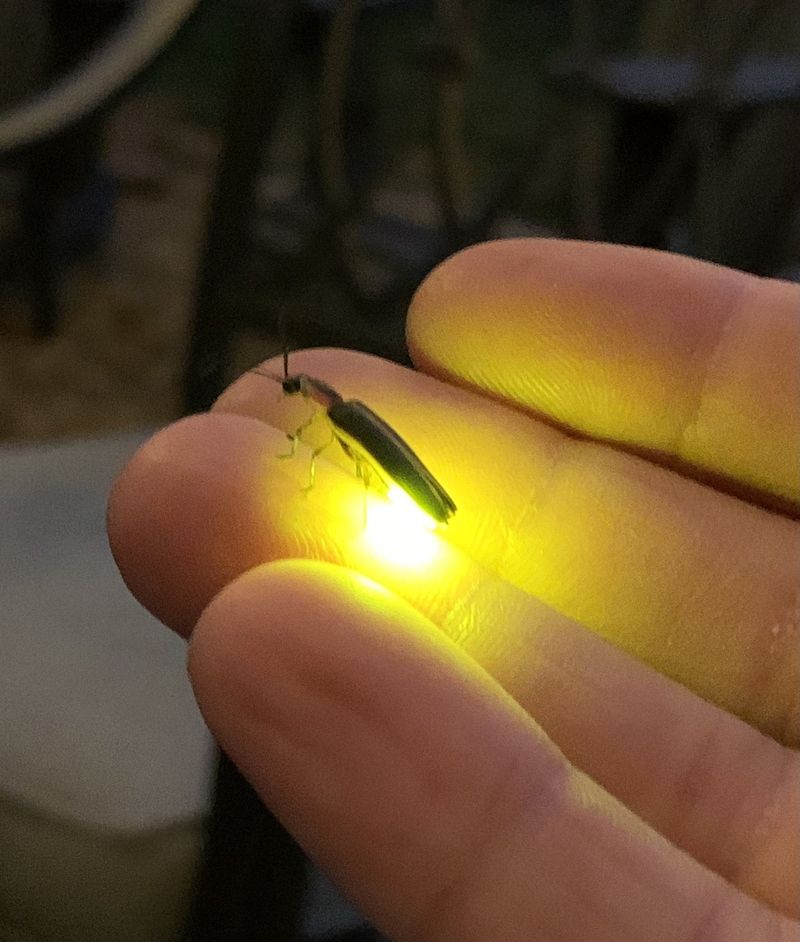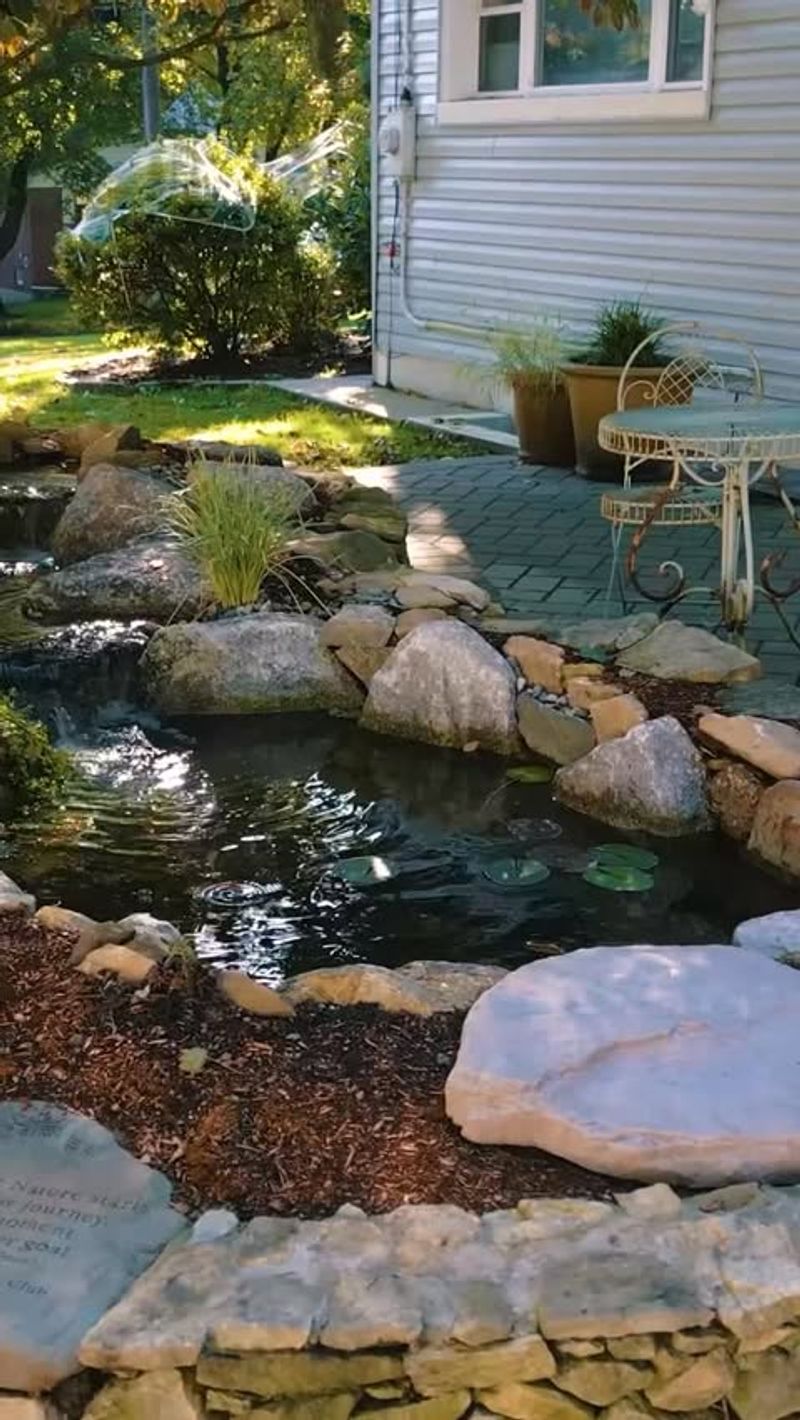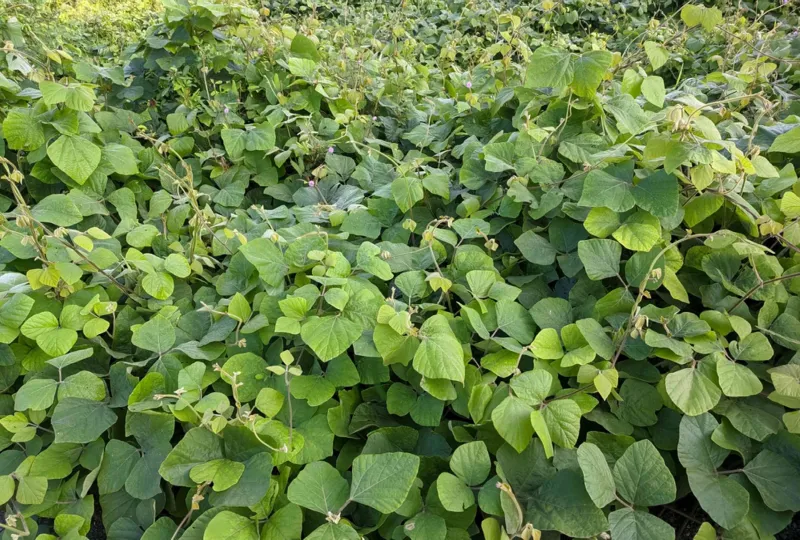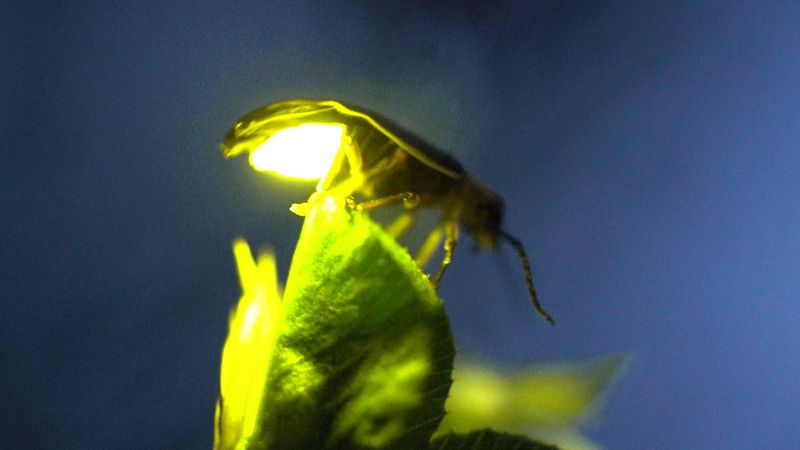If you’ve noticed fewer twinkling lights dancing across your Alabama yard this fall, you’re not alone. Fireflies, those magical beetles that once lit up summer and early autumn evenings, are becoming harder to spot in gardens throughout the state.
Understanding why these beloved insects are vanishing can help us take steps to bring them back and restore the enchanting glow to our outdoor spaces.
1. Light Pollution Blocks Their Romantic Signals
Artificial lights from streetlamps, porch fixtures, and security lights interfere with firefly communication. Males flash specific patterns to attract females, but bright outdoor lighting drowns out these delicate signals, making it nearly impossible for them to find mates.
Alabama neighborhoods with excessive nighttime illumination see fewer fireflies each year. Turning off unnecessary outdoor lights during firefly season helps these beetles complete their mating rituals.
Even small changes, like using motion-sensor lights or dimmer bulbs, can make your garden more firefly-friendly and restore some of that magical summer sparkle.
2. Pesticides And Lawn Chemicals Create Toxic Zones
Chemical treatments applied to lawns and gardens don’t just target mosquitoes and weeds—they kill fireflies too. These beetles spend most of their lives as larvae in the soil, where they’re extremely vulnerable to pesticides and herbicides.
Many Alabama homeowners unknowingly eliminate firefly habitat when treating their yards. Choosing organic lawn care methods protects firefly larvae hidden beneath the grass.
Letting portions of your property go chemical-free creates safe zones where these beneficial insects can develop. Natural pest control alternatives support fireflies while still keeping your garden healthy and beautiful throughout the growing season.
3. Loss Of Natural Habitat Leaves Them Homeless
Fireflies need diverse environments with leaf litter, tall grasses, and decaying wood to survive. Development and over-manicured lawns throughout Alabama have eliminated much of this essential habitat.
When homeowners rake away every fallen leaf and remove dead plant material, they destroy firefly nurseries. Larvae feed on snails, slugs, and worms found in moist, undisturbed areas.
Creating wild corners in your garden with native plants and leaving some leaves in place provides shelter and food sources. These messy spots might not look perfect, but they’re exactly what fireflies need to thrive and complete their life cycle.
4. Climate Changes Disrupt Their Life Cycles
Shifting weather patterns affect when fireflies emerge and how successfully they reproduce. Warmer fall temperatures in Alabama can confuse their internal clocks, causing them to appear at odd times when conditions aren’t ideal for survival.
Drought conditions dry out the moist soil habitats that larvae require, while unusual rainfall patterns can flood their underground homes. These climate-related stresses make it harder for firefly populations to maintain stable numbers.
While we can’t control the weather, maintaining garden areas with consistent moisture and shade helps buffer these insects against extreme temperature swings and unpredictable precipitation.
5. Overly Tidy Gardens Remove Essential Cover
Firefly larvae spend up to two years developing in the ground before becoming the glowing adults we recognize. They need protected spaces with ground cover, fallen logs, and dense vegetation to hide from predators and find prey.
Gardens that are constantly trimmed, edged, and cleared offer no refuge for these developing insects. Alabama gardeners who embrace a slightly wilder aesthetic see more fireflies return each season.
Allowing areas of longer grass, keeping brush piles, and planting ground covers creates the layered habitat fireflies desperately need. Beauty and biodiversity can coexist when we rethink what a healthy garden looks like.
6. Water Sources Are Disappearing
Fireflies and their prey need moisture to survive, making water sources critical to their lifecycle. Ponds, streams, and even consistently damp areas in gardens provide the humid environment larvae require.
Across Alabama, natural water features are being filled in or drained, while drought conditions reduce available moisture. Without adequate water, the snails and slugs that firefly larvae eat can’t survive either, breaking the food chain. Installing a small pond, birdbath, or even maintaining a rain garden creates oasis zones.
These water features don’t need to be elaborate—even a shallow dish refilled regularly can support the ecosystem that keeps fireflies thriving in your neighborhood.
7. Invasive Plants Crowd Out Native Species
Non-native plants that spread aggressively throughout Alabama gardens fail to support the complex ecosystem fireflies depend on. These invaders often lack the insects and other small creatures that firefly larvae hunt.
Native plants evolved alongside fireflies and provide the right structure, moisture retention, and prey base. When kudzu, privet, or other invasives dominate, they create biological deserts where few native species can survive.
Replacing even a portion of invasive plants with Alabama natives like wild bergamot, native grasses, or woodland flowers helps restore balance. Native gardens require less maintenance once established and naturally support fireflies along with countless other beneficial insects.
8. Lack Of Dark Corridors Between Properties
Fireflies need connected dark spaces to move between properties and find mates from different populations. Bright lights and barriers between Alabama yards create isolated pockets where fireflies can’t travel safely.
When every property is fully lit and fenced without natural passageways, firefly populations become genetically isolated and eventually disappear. Working with neighbors to create dark corridors—unlit pathways with native plantings—helps fireflies move through communities.
Coordinating lighting schedules so neighborhoods have dark hours during peak firefly season benefits everyone. These collaborative efforts strengthen local populations and bring back the magical light shows that once defined warm Alabama evenings.

